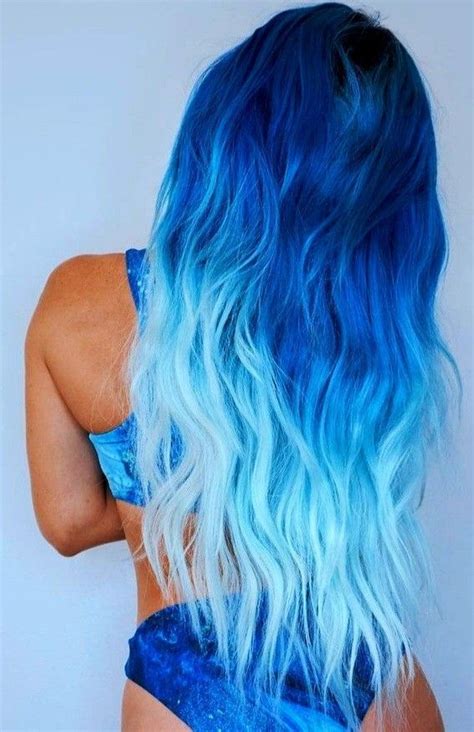## Ombre Hair Color: A Timeless Trend

Ombre hair color, characterized by its gradual transition from one shade to another, has captivated the hearts of hair enthusiasts for over a decade. This versatile technique offers endless color combinations, making it adaptable to any personal style and hair type.
### Statistics and Market Trends
According to a report by Allied Market Research, the global hair color market is expected to reach $39.05 billion by 2028. Ombre hair color accounts for a significant portion of this market, driven by its popularity among both celebrities and everyday fashion enthusiasts.
## Types of Ombre Hair Color
### Classic Ombre
The traditional ombre involves a gradual transition from a dark root shade to a lighter shade at the tips. This creates a natural, sun-kissed effect that complements a wide range of skin tones and hair textures.
### Rooted Ombre
Rooted ombre leaves a visible gap between the root color and the transitioned shade. This technique adds depth and dimension, creating a more edgy and bold statement.
### Reverse Ombre
Reverse ombre reverses the traditional ombre pattern, beginning with lighter shades at the roots and gradually transitioning to darker shades at the tips. This gives the illusion of hair growing out, creating a subtle yet striking effect.
### Fantasy Ombre
Fantasy ombre embraces bold and unconventional color combinations, such as vibrant blues, pinks, and greens. This technique allows individuals to express their creativity and make a statement with their hair.
## Benefits of Ombre Hair Color
### Low-Maintenance
Compared to other hair color techniques, ombre requires less frequent touch-ups. Since the root color remains natural, there is less regrowth to deal with, making it an ideal option for busy individuals.
### Versatility
Ombre hair color can be customized to complement any face shape, hair type, and personal style. Whether you prefer subtle, natural tones or bold, vibrant hues, there is an ombre variation that will suit your desires.
### Adds Volume and Texture
The gradual transition of colors in ombre hair creates an illusion of depth and texture, giving the hair a fuller, more voluminous appearance.
## How to Choose the Right Ombre Hair Color
Consider your skin tone: Warm skin tones complement shades like golden blondes and caramel browns, while cool skin tones look best with ash blondes and icy pinks.
Think about your hair type: Fine hair suits subtle, gradual ombre transitions, while thick hair can handle more dramatic and contrasting color combinations.
Determine your personal style: Ombre can be tailored to suit any aesthetic, from edgy and bohemian to elegant and sophisticated. Choose shades that reflect your individuality.
## Tips for Maintaining Ombre Hair Color
### Use Color-Protecting Shampoo and Conditioner
Invest in hair care products specifically designed for color-treated hair to prevent fading and preserve the vibrancy of your ombre.
### Limit Heat Styling
Heat can damage color-treated hair, so minimize the use of heat styling tools. When necessary, use a heat protectant spray to shield your hair from thermal damage.
### Get Regular Trims
Regular trims remove split ends and prevent breakage, keeping your ombre hair looking healthy and vibrant.
## Table 1: Ombre Color Combinations for Different Skin Tones
| Skin Tone | Warm Tones | Cool Tones |
|---|---|---|
| Warm | Golden blonde, caramel brown | Strawberry blonde, peach |
| Cool | Ash blonde, icy pink | Platinum blonde, lavender |
| Neutral | Honey blonde, chocolate brown | Champagne blonde, rose pink |
## Table 2: Ombre Techniques for Different Hair Types
| Hair Type | Technique |
|---|---|
| Fine | Subtle, gradual transition |
| Medium | Medium transition with contrasting shades |
| Thick | Dramatic, bold transition |
| Curly | Balayage with gradual color melt |
## Table 3: Common Ombre Hair Color Mistakes
| Mistake | Solution |
|---|---|
| Over-bleaching | Use a gentle bleach and process in stages |
| Uneven transition | Use a brush or comb to blend the colors smoothly |
| Too drastic color change | Start with a subtle transition and gradually add more contrast |
## Table 4: Questions to Ask Yourself When Considering Ombre Hair Color
| Question | Considerations |
|---|---|
| What is my skin tone and undertone? | Warm skin tones suit warm colors, while cool skin tones suit cool colors. |
| What is my hair type? | Fine hair requires subtle transitions, while thick hair can handle bold contrasts. |
| What is my personal style? | Ombre can be customized to suit any aesthetic. |
| How much time do I want to spend maintaining my hair? | Ombre requires less frequent touch-ups compared to other hair color techniques. |
## Conclusion
Ombre hair color continues to reign as a versatile and timeless hair trend, offering endless color possibilities to transform your look. By understanding the different types of ombre, choosing the right shades for your skin tone and hair type, and following maintenance tips, you can experience the beauty and versatility of ombre for years to come. Embrace this iconic hair color technique and let your creativity shine.
